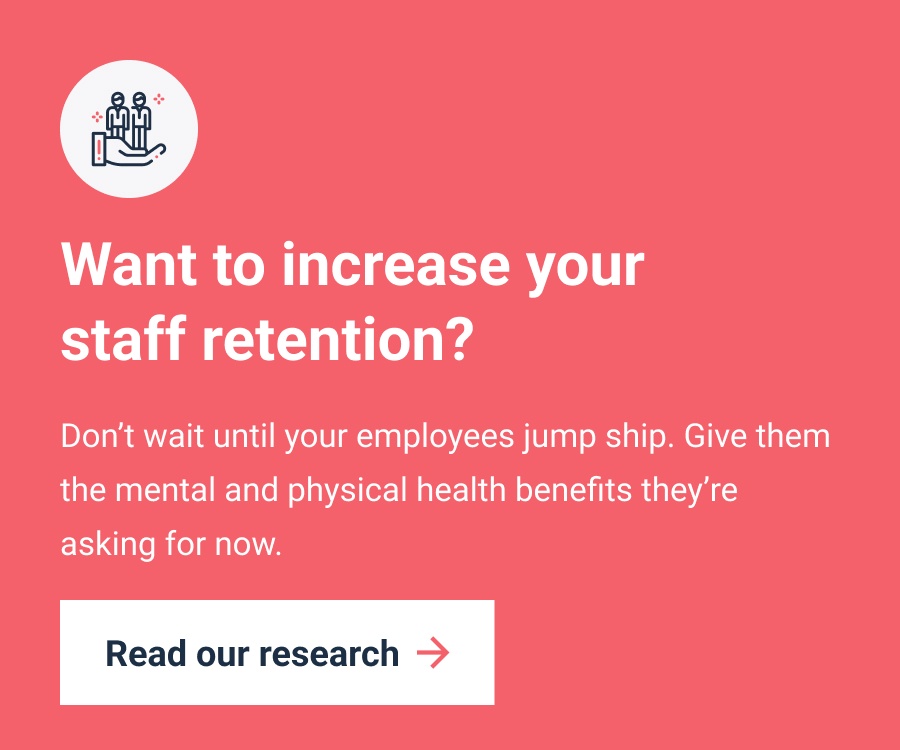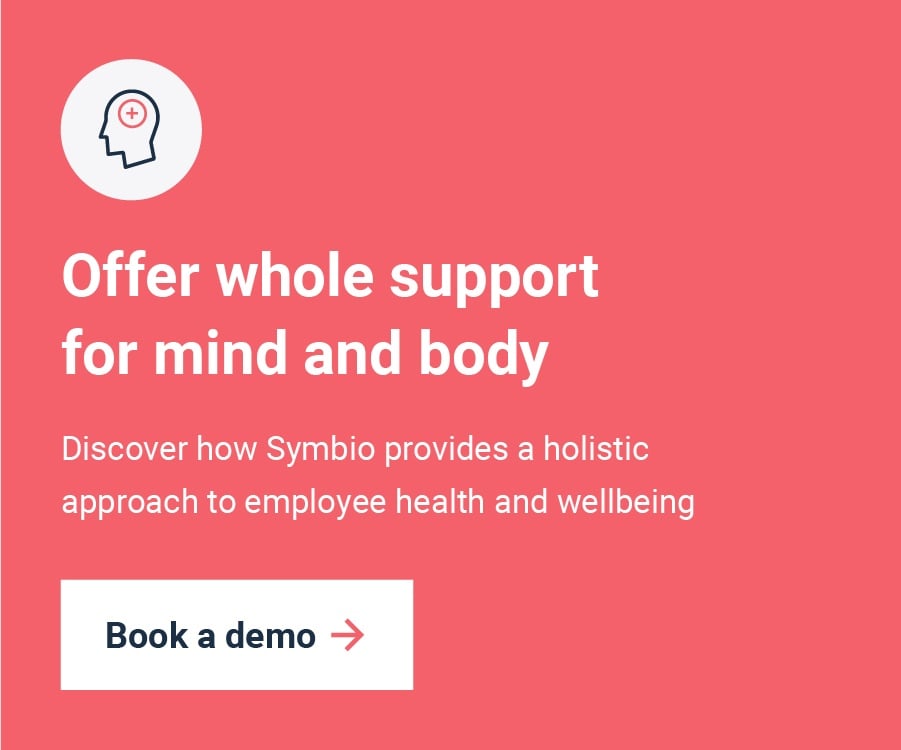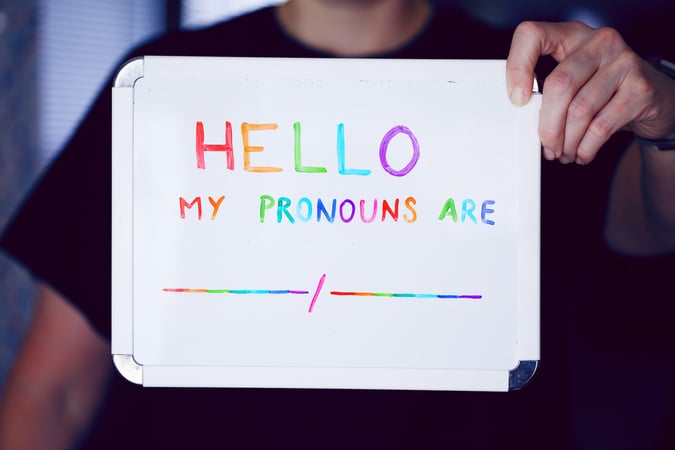Diversity is a powerful thing. An inclusive, diverse workplace is proven to be more productive and profitable. And it’s not only business performance that improves.
When employees feel included, this promotes wellbeing, agility, and resilience. But to survive, diversity needs to be encouraged and celebrated. This starts on an individual level — celebrating on an immediate and personal scale.
As a boss or manager, you can recognise that every employee can contribute. Beyond work, being an active community member can expand your horizons.
Discover how you can celebrate diversity to improve wellbeing and resilience.
1. Be an active ally

Being an ally is more than just being supportive. Leaders who ally can foster better wellbeing in their teams and create a more inclusive environment.
Call out disrespectful or discriminatory behaviour, turning to appropriate channels where possible and necessary. Try to educate yourself on issues; there are plenty of online resources to learn about LGBTQ+ identity and terminology.
Don’t expect people from minority groups to educate everyone themselves. Lead by example and advertise resources and literature from your wellbeing providers to start the conversation. If you’re looking for information to share with your teams on diversity, inclusion, or LGBTQ+, check out our resources.
2. Mind your language
Try to avoid gendered language where possible. Don’t use phrases such as “manpower” or “man-made” — try “staffing” or “artificial”. Unless specificity is required, use neutral terms for professions, like “police officer” or “firefighter”. Try not to use artificial, gendered binaries when trying to address everyone. For instance, instead of “ladies and gentlemen”, say “everyone”. Rather than “he/she”, use “they”. The singular “they” is grammatically correct in any situation.
3. Get stuck in

Diversity can have a positive impact on employee satisfaction as well as financial outcomes. However, it needs to start from the top. Consequently, leaders incorporating diversity into business plans will promote workplace wellbeing.
Leadership can play a part in fostering wellbeing through diversity and wellbeing campaigns that address these priorities. For example, organise book clubs dedicated to LGBTQ+ writers or events where people can try out new cuisine.
Employees can also access quality support using tools such as HealthHero. By pairing caring clinicians with innovative technology, we’ve created a safe and inclusive space where people can better understand their physical and mental health needs. Collaboration workspaces, flexible working, and healthy snacks can also promote positive wellbeing at work.
4. Encourage continuous learning
Encourage continuous learning by hosting events that spark awareness. For example, Cvent's employee community groups, such as Cvent Fierce for the LGBTQ+ community and allies, provide opportunities to engage in critical dialogue.
The definition of Pride is: "...a feeling of deep pleasure or satisfaction derived from one's achievements, the achievements of those with whom one is closely associated, or from qualities or possessions that are widely admired."
Despite this, members of the LGBTQ+ community are often not made to feel pride in their own lives, choices, and achievements. So, commit to putting the pride back in Pride Month by striving to create an inclusive and positive work environment. The conversation can start with one person, but lasting change requires learning.
5. Use pronouns
Proper pronouns and chosen name use have proven to improve the wellbeing of LGBTQ+ individuals. For example, according to a recent study, Transgender and gender nonbinary (TGNB) people whose pronouns were respected by “all or most of the people in their lives attempted suicide at half the rate”, of those whose pronouns were not respected.
So simply adding pronouns to email signatures can normalise pronouns and make the workplace a more accepting and inclusive space for all. It tells them which pronouns to use when referring to and talking to a staff member. It also helps avoid misgendering people with gender-neutral names — like Sam or Alex. They might also use titles, such as Dr, Prof, or Rev. Furthermore, Slack profiles can contain pronoun and name pronunciation fields that can be hidden or displayed.
However, don’t assume that people who don't include pronouns in their email signatures aren't concerned with inclusion. Many may not be ready to declare theirs, which is a personal decision. Therefore, consider asking them to submit the pronouns they'd like in their signatures through a survey and give them the option of not including or disclosing theirs. Also, educate your workforce on ways to use pronouns to affirm an employee's identity.
6. Make meetings inclusive

Underrepresented employees are prone to having their voices side-lined or excluded.. In fact, 90% of those who say they don’t feel comfortable sharing ideas at work have applied for another job in the last 6 months.
So psychological safety can impact retention. Indeed, inclusive meetings are necessary. Why wouldn't you provide your team a space to be themselves and contribute to the conversation?
Here's how to create an inclusive meeting culture:
- Introduce a facilitator: Having a team member facilitate meetings ensures that the conversation stays on track by guiding it. They also foster a culture where people feel comfortable sharing their ideas without being interrupted.
- Create a collaborative agenda: Share before a meeting. It can be as simple as a list of topics or a more detailed plan. No one feels on the spot since everyone gets to prepare and participate. Additionally, those who feel less comfortable speaking up can add points they wish to discuss.
- Listen closely and amplify: Recognise and credit your employees' ideas when they share them. Amplification is critical for inclusion since underrepresented groups are more likely to be dismissed or spoken over. Furthermore, according to a report, black people feel less comfortable speaking in internal meetings. And women are less likely to feel comfortable speaking in meetings than men. Not to mention, Gen Z is the generation most unlikely to feel comfortable speaking up. Therefore, as an employer, it's your responsibility to get their voices heard. First, ask the person who rarely speaks. This will help those who are routinely overlooked to share more. On that point, let them know ahead of time what you're going to ask.
- Provide more than one way to contribute: People who are extroverted and among the majority are likely to get more credit and airtime. They’re also typically forgiven more often when they interrupt. To end this cycle, leaders must be mindful. So, encourage participation from those who would not usually have the chance to speak. Follow this great advice from Eva Jo Meyers: “No one should speak twice until everyone has spoken once.” Just remember that everyone has different communication styles. Not everyone feels comfortable taking the stage. Besides this, there are other ways to invite contributions. For example, on virtual, encourage participation through the chat feature. Afterwards, allow people to add comments to the meeting notes.
- Create psychological safety: Encourage your team to share their thoughts. It can help them become confident in being vulnerable and taking calculated risks. You can also make your one-on-ones more inclusive. In fact, how comfortable employees are in team meetings reflects how much trust you build with them. It will also encourage them to take risks and increase psychological safety. For instance, Google suggests kicking off each meeting by saying, "Let’s agree to be open to new ideas and express any disagreement respectfully." This will encourage diversity in thought.
7. Reach beyond the workplace
Your workplace can get involved with a number of organisations and networks to foster an inclusive culture. The Stonewall Champions programme currently involves over 900 leading companies from around the UK. Stonewall — Europe’s largest LGBTQ+ charity — also runs conferences dedicated to workplace inclusion, offering opportunities for employers and managers to engage with experts and leaders in equality, diversity and inclusion. Additionally, they provide resources and toolkits online, including free best practice guides.
Diversity is just one aspect of a successful wellness strategy. Investing in a tool like HealthHero offers your employees access to online doctors and counsellors to address all aspects of wellbeing, including complex needs and mental health.






